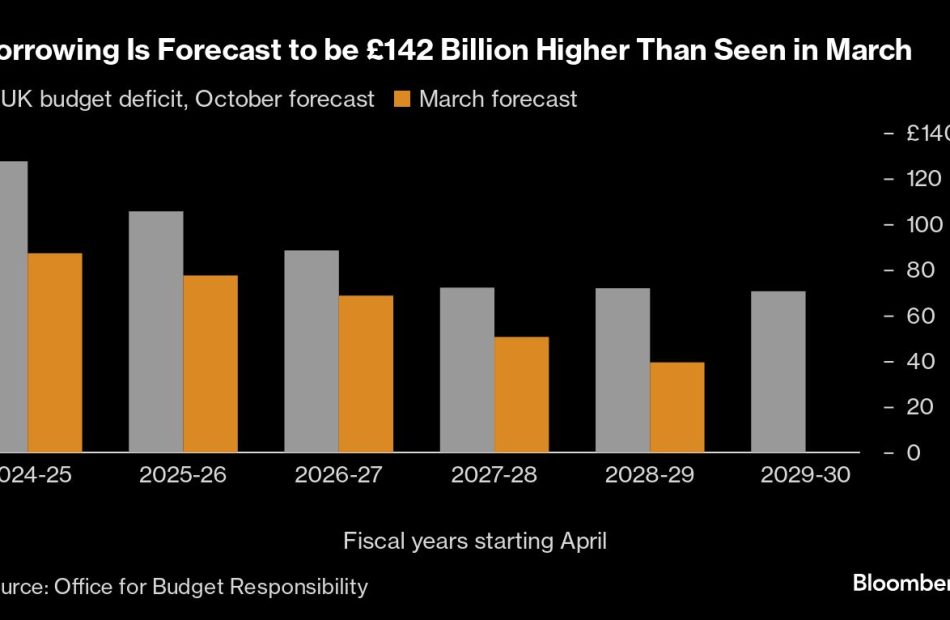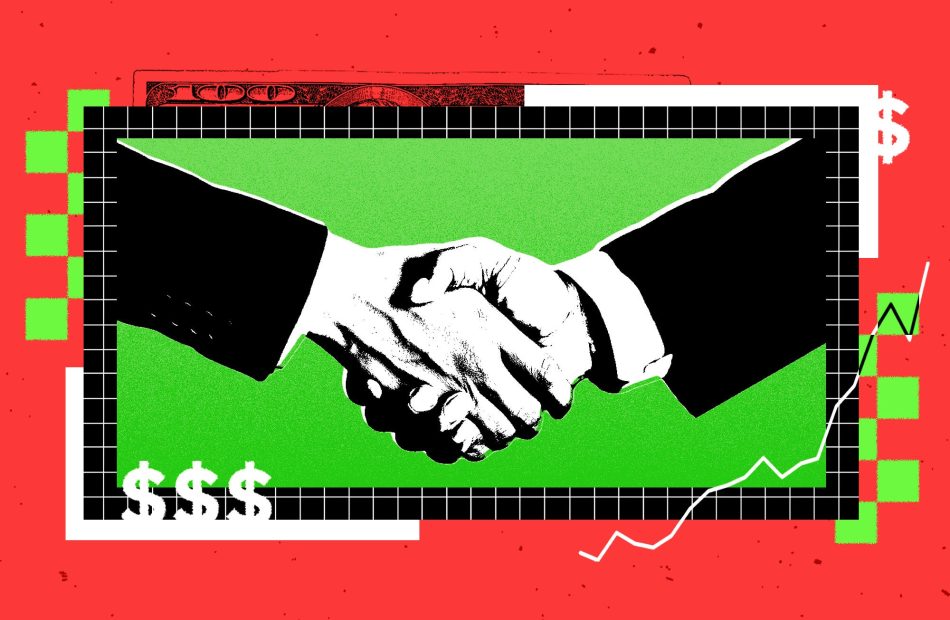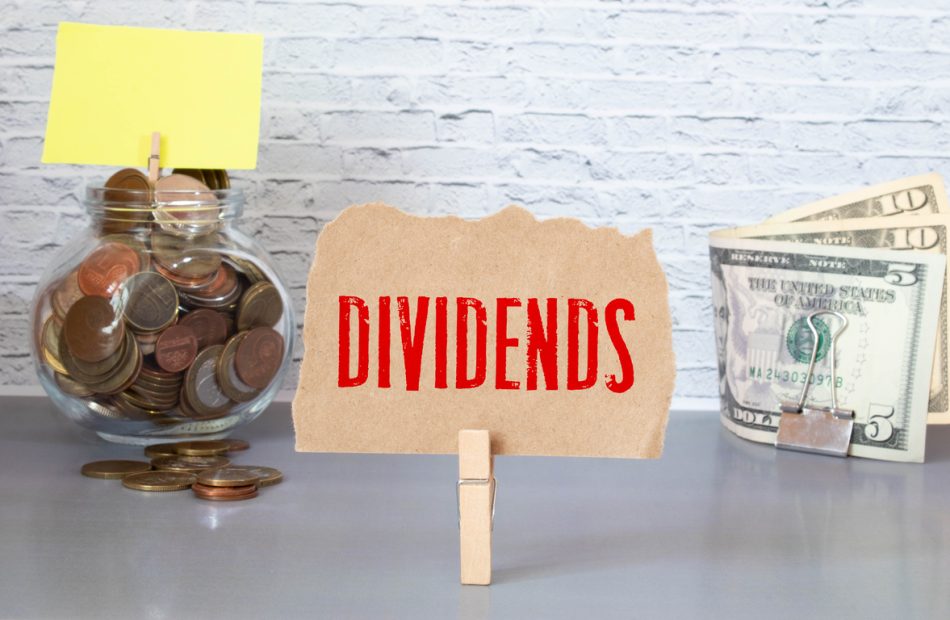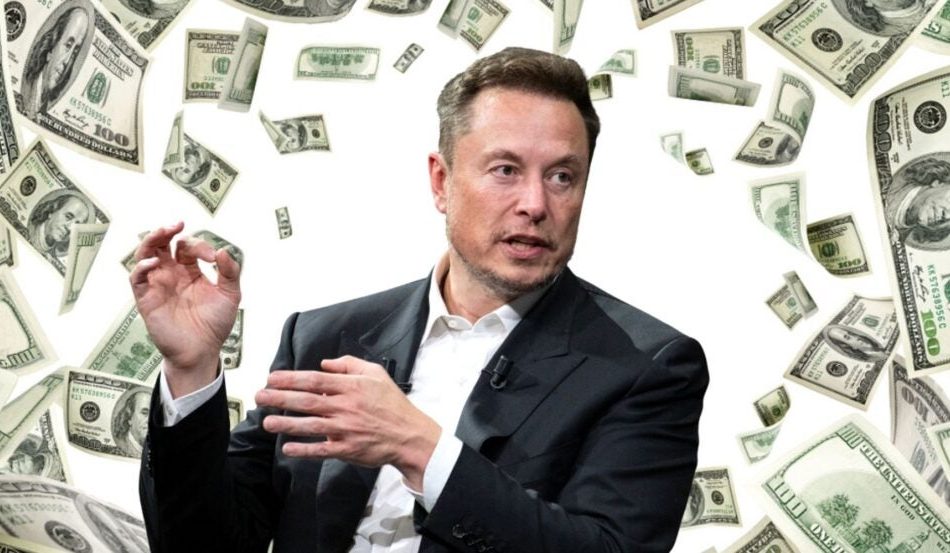Fed and Peers Will Go Ahead With Rate Cuts After This Week’s US Election
(Bloomberg) — The Federal Reserve and many rich-world peers are widely expected to lower interest rates again in the coming week, right after a US presidential election that may not be decided yet.
Central banks responsible for more than a third of the global economy will set borrowing costs in the wake of the vote, clinging to whatever certainties they can discern on the likely path of American policy for the next four years.
With Vice President Kamala Harris and former President Donald Trump neck-and-neck before Election Day on Nov. 5, monetary officials from Washington to London may find themselves still in suspense.
Election aside, US policymakers have already communicated a desire to proceed with a more gradual pace of rate cuts after September’s half-point reduction. Economists widely expect a quarter-point move on Thursday, followed by another in December — and their conviction grew after data on Friday showed the weakest hiring since 2020.
Fed officials try to steer clear of politics, yet they kicked off a rate-cutting cycle heading into the final stretch of an election whose outcome may hinge on how voters feel about the economy. While Chair Jerome Powell will likely stress that the current conditions warrant less restrictive policy when he speaks after the decision, he and his colleagues still risk political backlash.
“With polls showing the campaign in a dead heat, the stakes couldn’t be higher. The winner will be able to reshape trade policy – Trump, especially, is likely to make use of this power if he wins.”
—Anna Wong, Stuart Paul, Eliza Winger, Estelle Ou and Chris G. Collins, economists. For full analysis, click here
Central banking counterparts elsewhere are confronting a panoply of risks ranging from slowing economic growth to lingering inflation, even before they contemplate what sort of hit to global trade Trump’s threat of tariffs would effectively entail.
While the Reserve Bank of Australia will probably keep borrowing costs on hold again in a decision on Tuesday, hours before US polls open, other peers are poised to act. Those in the UK, Sweden, the Czech Republic and elswewhere are anticipated to cut rates in decisions after Election Day, while Brazilian officials may hike by as much as a half point.
Inflation isn't going anywhere, and higher rates could spark a 12% downturn for stocks in the coming year, veteran strategist says
-
Inflation and higher interest rates aren’t going away, veteran strategist Bill Blain says.
-
Blain, the principal of Wind Shift Capital, thinks global inflation is entrenched and rates can’t come down much more.
-
Higher rates could crush speculative investments, driving a 12% decline in stocks, he said.
Households and companies may be breathing a sigh of relief as borrowing costs move lower, but they shouldn’t get comfortable because rates and inflation are going to remain high — and that reality could spark a big drop for stocks in the next year, Wall Street veteran Bill Blain said.
Blain, a longtime strategist and principal of Wind Shift Capital Advisors, said he sees a rocky 12 months ahead for the stock market. He said the Fed isn’t poised to take interest rates as low as markets think, and borrowing costs could indeed rise from here. That could crimp lending, slow dealmaking, and take US and global stocks down 7%-12%, he told Business Insider in an interview.
“I think the crunch that we face is what happens when interest rates start to rise, and governments are not in a position to continue boosting the economy in an interest rate rising environment because they’ve lost the support of markets,” Blain said.
In the event of a credit crunch, he doubts the US will be able to dole out stimulus as it did during the pandemic, due to concerns about the overall level of debt and the inflationary impact on the economy.
“It’s the reality that inflation is going to creep back into the global economy. Interest rates are going to have to rise,” he said.
Blain’s forecast may sound counterintuitive to investors who have been pricing in ambitious rate cuts from the central bank.
But the US economy faces too many inflationary pressures over the medium-term to warrant aggressive policy easing, Blain said.
For one, the federal debt has swelled to a historic $35 trillion. Economists have flagged rapid government borrowing as a factor that risks stoking inflation.
Meanwhile, supply chain issues linger, and given rising geopolitical tensions, world trade looks on track to be more fragmented, which can also prop up inflation.
Finally, the threat of high tariffs from former President Donald Trump would impose a tax on nearly all imported US goods that economists say would end up being passed on to the consumer.
“I think inflation is going to be more ingrained, as it was in the 1970s and early ’80s,” Blain said. “It’s going to be a very, very different economy and we just need to get used to it.”
Should You Ignore Chevron and Buy This Magnificent High-Yield Energy Stock Instead?
Chevron (NYSE: CVX) is a very well-run energy company. And it offers an attractive 4.3% dividend yield backed by 37 years worth of annual dividend increases. If you are looking for a diversified energy stock with a high yield, it would make a great addition to your portfolio. But if you care more about yield than about diversification, you might be better off with Enterprise Products Partners (NYSE: EPD). Here’s why.
Chevron is what is known as an integrated energy major. The “major” part is related to its size and industry position, noting that, given its $270 billion market cap, it is one of the largest energy companies on the planet. Its business is spread around the world, giving it a material amount of geographic diversification. But that isn’t the only diversification it has.
Start Your Mornings Smarter! Wake up with Breakfast news in your inbox every market day. Sign Up For Free »
The real lynchpin for being called integrated is that a company must have operations in energy production (the upstream), energy transportation (the midstream), and in chemicals and refining (the downstream). These are the three main segments of the broader energy sector and Chevron is a big player in every one of them. If you are looking for a simple way to add energy exposure to your portfolio while collecting a sizable and reliable dividend, Chevron is a great choice.
The one problem is that Chevron’s operation in the upstream and the downstream are highly volatile. That’s because both are driven by commodity products. So Chevron’s financial results can vary greatly from year to year and that can make it hard for more conservative investors to stick around over the long term.
That’s where a high-yield option like Enterprise Products Partners comes in. The yield is even larger at 7.2%. And this master limited partnership (MLP) operates in the most reliable segment of the energy patch, the midstream. It owns the transportation assets, like pipelines, that move oil and natural gas around the world.
The important piece here is that Enterprise charges fees for the use of the vital energy infrastructure it owns. The volume of energy products passing through its system is more important than the price of the products it is transporting. Energy demand tends to remain high even during oil downturns. And, thus, Enterprise’s cash flows are highly reliable. That’s how it has managed to increase its distribution every year for 26 consecutive years. Notably, the MLP’s distributable cash flow covers its distribution by 1.7 times, which means that there’s a lot of leeway for adversity before a cut would be on the table.
Should You Buy Nvidia Stock Before Nov. 20? The Evidence Is Piling Up, and Here's What It Suggests.
The adoption of artificial intelligence (AI) is continuing at a brisk pace, but some are waiting for the other shoe to drop. A strengthening U.S. economy and robust quarterly results from several AI-related companies helped push the Nasdaq Composite to a new record high last week. Yet these same factors have some investors wondering if the bull market has gone too far, too fast.
Nvidia (NASDAQ: NVDA) has become the de facto standard bearer for the generative AI industry. The company is scheduled to report its fiscal 2025 third-quarter results in less than three weeks, and it’s not an exaggeration to suggest that Wall Street is on pins and needles waiting for the clues that report will offer about the state of AI adoption. Nvidia’s sales have surged since the start of last year, driving the stock up 833% (as of this writing). It’s also less than 5% off the all-time high it touched late last month.
Start Your Mornings Smarter! Wake up with Breakfast news in your inbox every market day. Sign Up For Free »
There’s a lot riding on Nvidia’s upcoming financial report, and many shareholders are wondering whether the stock can possibly continue its breathtaking run. Is it worth picking up shares ahead of its financial report on Nov. 20? Fortunately for investors, data has begun to pile up that could help answer that question.
The key to Nvidia’s astounding successes of the past couple of years has been the performance of its graphics processing units (GPUs), which are the best chips for supplying the specific type of computational horsepower necessary for generative AI, as well as other types of cloud computing needs. The necessary resources and the sheer magnitude of data involved limit the top-tier AI models to the world’s largest technology companies and cloud providers — most of which are Nvidia customers. Comments made in conjunction with those tech giants’ recent quarterly results provide some insights about the state of the AI revolution — and the evidence is clear.
For example, Microsoft (NASDAQ: MSFT) said it spent heavily to advance its AI agenda in its fiscal 2025 first quarter (which ended Sept. 30). The company had capital expenditures (capex) of $20 billion, which primarily went to support “cloud and AI-related” demand. CFO Amy Hood expects Microsoft’s spending spree to continue: “We expect capital expenditures to increase on a sequential basis given our cloud and AI demand signals,” she said.
During Alphabet‘s (NASDAQ: GOOGL) (NASDAQ: GOOG) third-quarter earnings call, CEO Sundar Pichai said, “Realizing [the opportunity] of AI requires … meaningful capital investment.” The company revealed capex of $13 billion during the quarter and suggested there would be “substantial increases in capital investment … going into 2025.”
2 Top Dividend Stocks I Plan to Buy Even More of In November
I love buying dividend stocks. I like to collect the passive income they produce. On top of that, dividend stocks have historically delivered much higher total returns than companies that don’t pay dividends. Because of that, they’re a no-brainer investment for me.
I like to routinely add to my favorite dividend stocks each month. Two that top my buy list for November are Chevron (NYSE: CVX) and Vici Properties (NYSE: VICI). Here’s why I plan to continue adding to these top dividend stocks this month.
Start Your Mornings Smarter! Wake up with Breakfast news in your inbox every market day. Sign Up For Free »
Chevron is one of the best dividend stocks around, increasing its payout for more than 35 straight years. The oil giant raised its payment by 8% earlier this year and has grown it faster than its peers and the S&P 500 over the last five years. Chevron currently offers a very attractive dividend yield of more than 4%, putting it much higher than the S&P 500 (under 1.5%).
The company should have plenty of fuel to increase its dividend in the future. Chevron expects to grow free cash flow by more than 10% annually through 2027. That forecast assumes oil prices of $60 a barrel, which is below levels of the past three-plus years. Meanwhile, shareholders should also benefit as the company uses some of that cash to repurchase shares. Chevron is planning to buy back $10 billion to $20 billion of shares annually, which is enough to retire 3% to 6% of its outstanding shares. Thanks to its fortress-like balance sheet, it can achieve the low end of that range even if crude oil prices average around $50 a barrel.
Meanwhile, there’s upside to that plan if Chevron closes its needle-moving acquisition of Hess. That deal would more than double its free cash flow by 2027, assuming $70 oil. The acquisition would also extend its production growth outlook into the 2030s. That could give Chevron even more fuel to increase its dividend in the future.
Vici Properties has developed an excellent record of paying dividends. The real estate investment trust (REIT), which focuses on experiential properties like casinos, has increased its payment every year since its formation seven years ago. It most recently raised its dividend by 4.2% and has grown its payout at a peer-leading rate since it came public.
The REIT’s dividend currently yields more than 5%. Vici Properties should be able to continue growing its payout in the future. It has several growth drivers, including:
NN, Inc. Executive Management to Present at the Gabelli Funds 48th Annual Automotive Symposium
CHARLOTTE, N.C., Nov. 02, 2024 (GLOBE NEWSWIRE) — NN, Inc. NNBR, a global diversified industrial company that engineers and manufactures high-precision components and assemblies, announced today that Harold Bevis, President and Chief Executive Officer, and Chris Bohnert, Senior Vice President and Chief Financial Officer, will be presenting at the Gabelli Funds 48th Annual Automotive Symposium on November 4, 2024 in Las Vegas.
The presentation will begin at 11:20 a.m. PT (2:20 p.m. ET) on Monday, November 4, 2024. Investors interested in accessing the Company’s presentation may register to access the live event here. All registrants will receive a link to the event upon registration. A link to the presentation and associated materials can also be accessed through the investor section of the Company’s website at www.nninc.com.
In addition, executive management will be hosting one-on-one and group meetings with investors and analysts that have registered to attend the conference.
About NN, Inc.
NN, Inc., a global diversified industrial company, combines advanced engineering and production capabilities with in-depth materials science expertise to design and manufacture high-precision components and assemblies for a variety of markets on a global basis. Headquartered in Charlotte, North Carolina, NN has facilities in North America, Europe, South America, and Asia. For more information about the company and its products, please visit www.nninc.com.
Investor Relations:
Joe Caminiti or Stephen Poe, Investors
NNBR@alpha-ir.com
312-445-2870

Market News and Data brought to you by Benzinga APIs
© 2024 Benzinga.com. Benzinga does not provide investment advice. All rights reserved.
SPZI: JP3E Issues PR Clarification
NEW YORK, Nov. 02, 2024 (GLOBE NEWSWIRE) — JP 3E Holdings, Inc. (“JP3E”), formerly known as Spooz, Inc. SPZI, is clarifying the press release issued on October 31, 2024. JP3E has no interest in the transaction with Öztürk Holding, LLC. JP3E is involved with executing EB-5 funding for Kerogen II only.
To receive information on JP3E, sign up for email news alerts at https://www.jp3e.com/subscription.
For additional information on the Global Trade Financing Platform via Bloxcross, Inc., contact sgallegos@bloxcross.com.
About JP 3E Holdings, Inc.
JP3E is a global leader in commodity trading, known for its innovative approach to optimizing trade processes and solutions across numerous sectors. With a commitment to sustainability and market leadership, JP3E continues to drive new trends and solutions in global commodity markets.
About Bloxcross, Inc.
Bloxcross is at the forefront of financial technology, specializing in blockchain-based solutions for cross-border payments and trade finance. Dedicated to streamlining global financial transactions, Bloxcross provides secure, fast, and cost-effective services to clients worldwide. To learn more about their groundbreaking solutions, visit https://www.blox.global/.
Company Contact:
John K. Park, Chairman
john.park@jp3eholdings.com
732-241-0598 Office
Websites: https://www.jp3e.com/
https://www.jp3eholdings.com/
Twitter: http://www.twitter.com/SpoozInc
Facebook: http://www.Facebook.com/SpoozInc
E-Mail: info@jp3e.com
Safe Harbor Notice
Certain statements contained herein are “forward-looking statements” (as defined in the Private Securities Litigation Reform Act of 1995). The Companies caution that statements, and assumptions made in this news release constitute forward-looking statements and make no guarantee of future performance. Forward-looking statements are based on estimates and opinions of management at the time statements are made. These statements may address issues that involve significant risks, uncertainties, and estimates made by management. Actual results could differ materially from current projections or implied results. The Companies undertake no obligation to revise these statements following the date of this news release.

Market News and Data brought to you by Benzinga APIs
© 2024 Benzinga.com. Benzinga does not provide investment advice. All rights reserved.
Musk Can Continue Daily Million-Dollar Giveaways While Judge Mulls Legal Challenge
Billionaire Elon Musk can continue distributing cash to registered voters while a Pennsylvania state judge considers the case.
Through his America PAC, Musk has been offering daily $1 million cash rewards to registered voters in swing states who sign a petition, which some officials claim may violate electoral laws, reported BBC.
The billionaire has been actively campaigning for Trump in Pennsylvania, a crucial swing state, organizing rallies and giving away big checks to some participants. However, this week, Philadelphia District Attorney Lawrence Krasner filed a lawsuit against Musk over these giveaways, stating that he must be stopped before the upcoming presidential election.
Also Read: Elon Musk Pumps More Than $130M Into Trump And GOP Campaigns
During a hearing on Thursday, Judge Angelo Foglietta announced that the lawsuit will be paused while a federal court decides whether to accept the case. If the federal court opts not to address the issue, the case will return to state court. Following the hearing, Musk took to X, the platform he owns, to refer to the ruling as “American Justice FTW (for the win).” It is unlikely that the case will be resolved before Tuesday’s election.
John Summers, a lawyer working with Krasner, informed reporters that they intend to take the matter to federal court to address the issues and seek to have it returned to state court. These swing states indicate a closely contested race between Trump and his Democratic opponent, Kamala Harris.
On Thursday, Musk’s America PAC announced another winner: Dacey from Fremont, North Carolina, who received a $1 million check, BBC noted. To qualify for the giveaway, registered voters must provide personal information, such as addresses and phone numbers, and sign a pledge affirming their support for the U.S. Constitution.
The lawsuit against Musk alleges that he is running an illegal lottery and accuses him of violating consumer protection laws through misleading statements that could cause confusion.
According to U.S. law, it is illegal to pay individuals to register to vote, but legal experts have told the BBC that the legality of the giveaway under federal law remains uncertain. If a court finds Musk has violated the law, he could face a $10,000 fine and up to five years in prison.
Read Next:
Image: Shutterstock
Market News and Data brought to you by Benzinga APIs
© 2024 Benzinga.com. Benzinga does not provide investment advice. All rights reserved.








